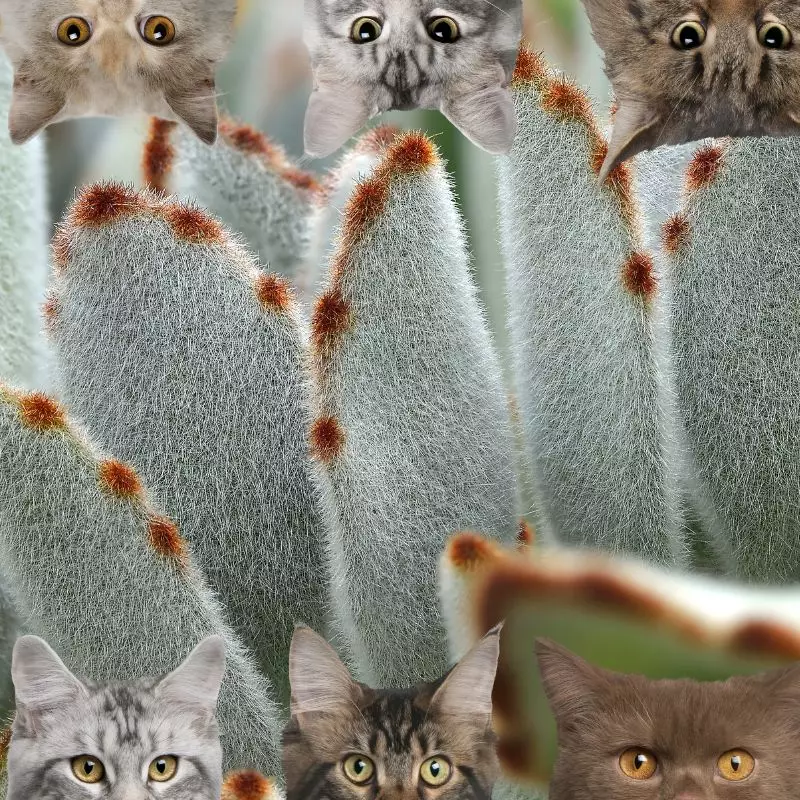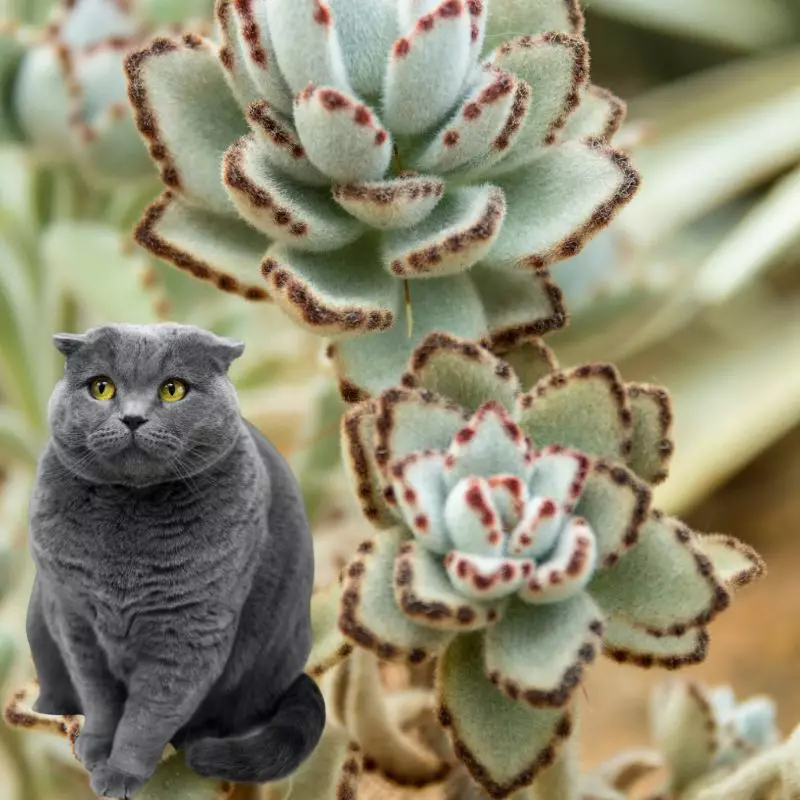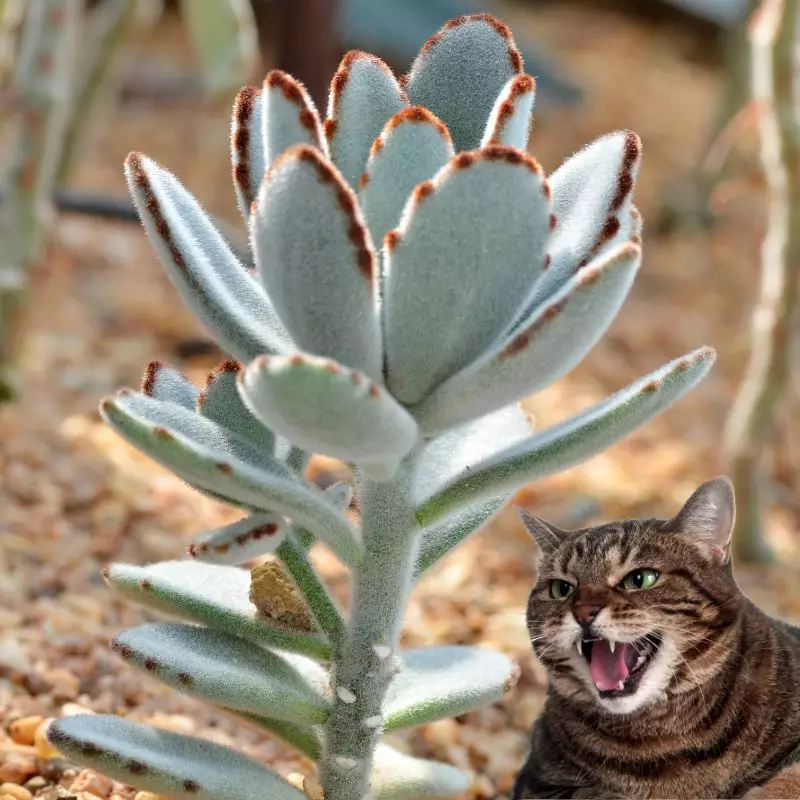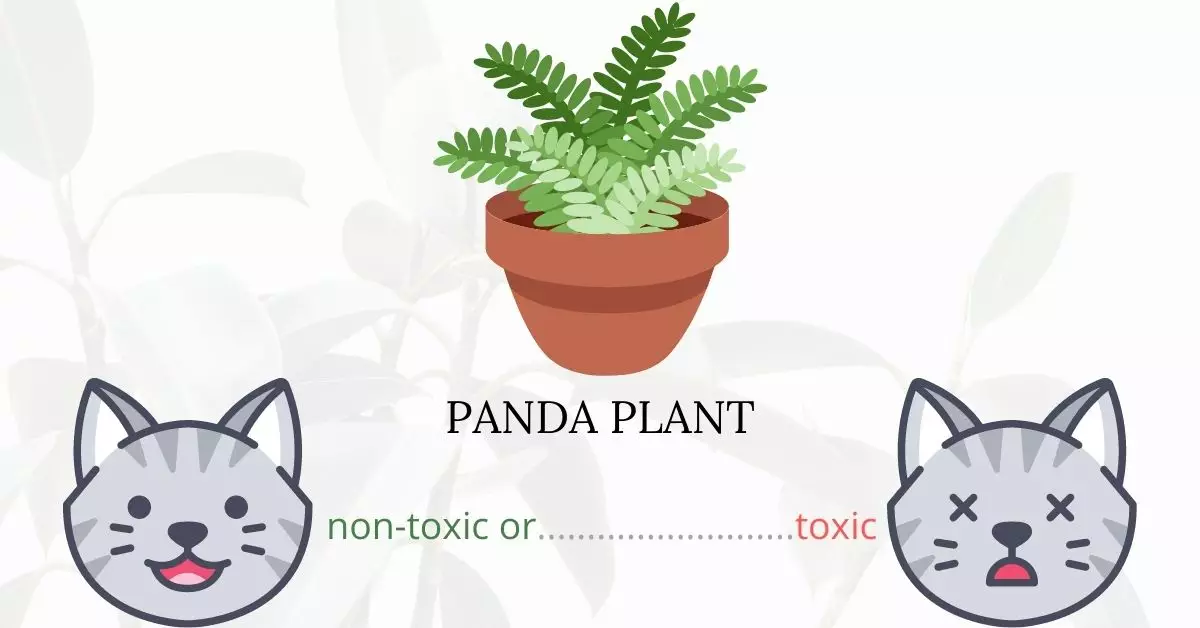The panda plant is indeed toxic to cats. This toxicity arises from its content of insoluble calcium oxalates, which are stored in specialized non-living cells known as idioblasts. When a cat chews on the plant, these idioblasts release the oxalates, which present as raphides—microscopic bundles with razor-sharp ends. These raphides can embed themselves in a cat’s lips, mouth, and tongue, causing discomfort. However, the cat is unlikely to face life-threatening consequences unless it consumes a significant amount of the plant.
This article is a product of extensive research and collaboration with a team of experienced DVMs (doctors of veterinary medicine). Their insights and expertise have been instrumental in ensuring the accuracy and relevance of the information provided. To further our commitment to reliability, we have cross-referenced our findings with high-authority websites such as ASPCA and PetMD to offer a comprehensive understanding of the potential risks associated with the panda plant and its effects on cats.
Clinical Signs of Panda Plant Poisoning in Cats

Upon ingestion or contact with the panda plant, cats might exhibit a range of symptoms, which arise due to the insoluble calcium oxalates contained in the plant. Here’s a closer look at each symptom and its underlying cause:
- Intense Burning of the Mouth, Tongue, and Lips: This burning sensation is caused by the raphides (sharp, microscopic calcium oxalate crystals) released from the idioblasts. When a cat chews or even just contacts the plant, these raphides can pierce the soft tissues, resulting in immediate discomfort.
- Oral Irritation: Beyond the initial burning, the physical damage caused by the raphides can lead to a persistent irritation in the oral cavity. The mouth’s sensitive tissues become inflamed in response to the microscopic injuries.
- Swelling of the Throat: As with the oral irritation, the raphides can cause damage to the throat’s lining when swallowed, leading to inflammation and swelling.
- Excessive Drooling: The cat’s body naturally produces saliva as a protective response to help flush out and dilute any irritants in the mouth. In this case, the presence of the sharp raphides triggers excessive saliva production.
- Difficulty Swallowing: Swelling in the throat combined with the oral irritation can make swallowing painful and difficult for the affected cat.
In cases where a cat consumes a substantial portion of the panda plant, more severe clinical signs can manifest, including:
- Renal Failure: The toxins in the panda plant can cause damage to the kidneys over time, potentially leading to renal failure if a significant amount is ingested.
- Convulsions: Toxic compounds in the plant can affect the cat’s central nervous system, leading to seizures or convulsions.
- Coma: In extreme cases, and often following a series of neurological symptoms like convulsions, a cat might slip into a coma.
First Aid and Treatment of Panda Plant Poisoning in Cats

Your cat may be dehydrated as a result of its inability to eat or drink due to mouth pain. The dehydration can be exacerbated if it develops into vomiting or diarrhea. The doctor may administer an intravenous fluid solution to rehydrate your cat and aid in the removal of any leftover poisons. Your cat’s urine will not crystallize as a result of the IV fluid.
Your veterinarian may administer oxygen to your cat if he is having trouble breathing or has low oxygen saturation levels. This will help restore his oxygen levels to normal. Administering diphenhydramine (Benadryl) to your cat will alleviate any mouth swelling. Benadryl can also aid in the prevention or reduction of airway edema induced by the body’s inflammatory reaction. If your cat’s edema and respiratory problems are severe, it may need to be intubated until the swelling subsides and the situation stabilizes.
Other medications and procedures may be done by the veterinarian as he may deem necessary for your cat’s condition.
Recovery from Panda Plant Poisoning in Cats

Once all of the toxins and crystal oxalates have been removed from your cat’s system, it should be able to recuperate normally. The veterinarian’s treatment and recommendations may vary depending on the cat’s situation. Generally, healthy cats can recover quickly from panda plant poisoning.
Prevention of Panda Plant Poisoning in Cats
Keeping your cat indoors and growing cat-friendly alternative plants in your home is the best method to keep your cat safe and minimize the risk of plant poisoning. Familiarize yourself with toxic plants that can harm your cat and observe around you if there are plants like this growing in your area.
If you love plants but have cats at home, check out these lists:





